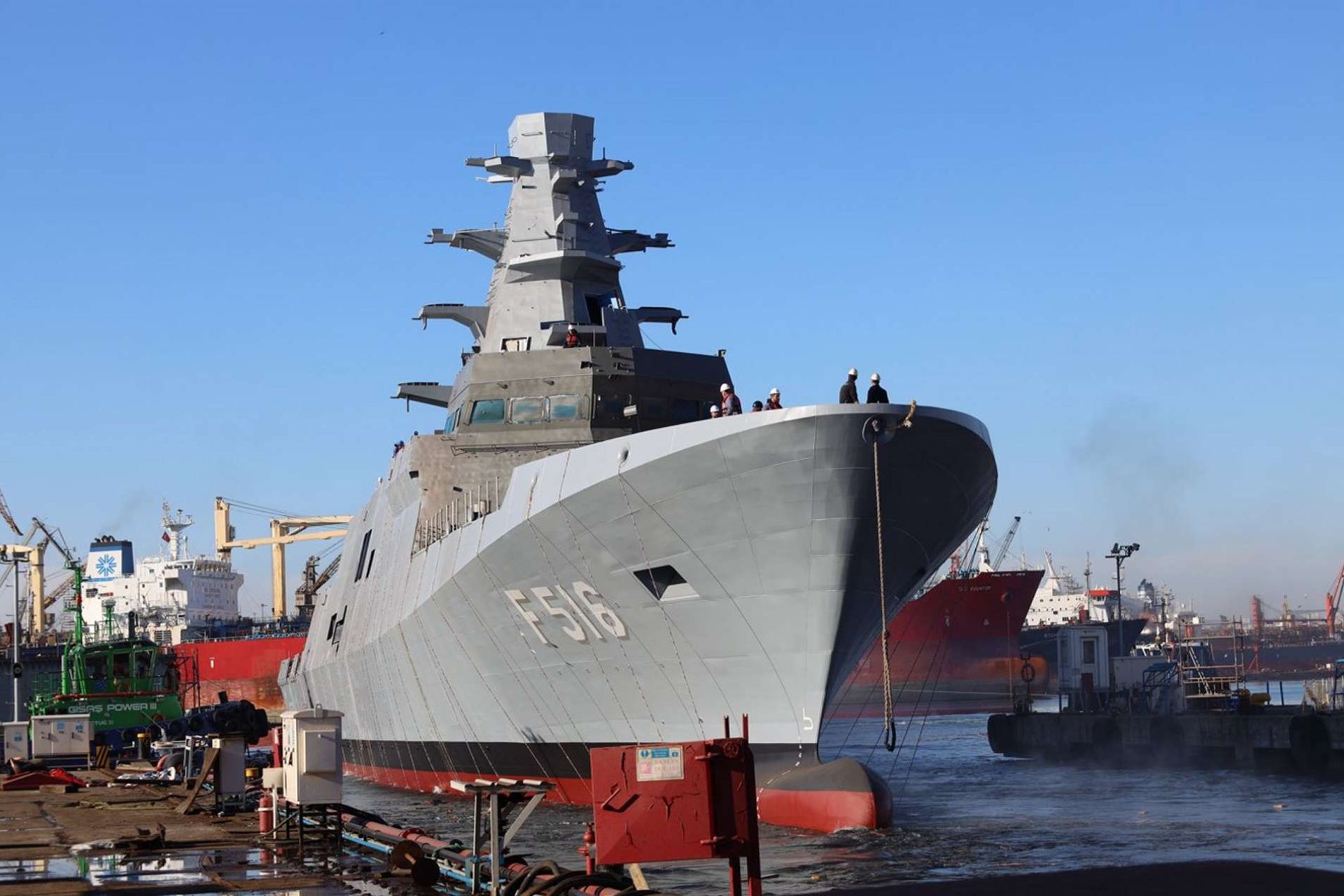Breaking News
New IZMIR and IZMİT Frigates Join Turkiye’s Blue Homeland Strategy.
According to information published by SSB on January 11, 2025, the MİLGEM İSTİF-class frigates IZMIR (F-516) and IZMIT (F-517) have been launched into the seas. Constructed under the coordination of Turkey’s Defense Industry Agency (SSB) and in collaboration with TAİS and STM, these indigenous warships follow the successful delivery of TCG ISTANBUL (F-515).
Follow Army Recognition on Google News at this link

Turkish Istif-class frigate Izmir. (Picture source: Tais Shipyards)
These frigates are a continuation of the Ada-class corvettes but incorporate enhanced firepower, extended range, and improved multi-role operational versatility, making them suitable for both littoral and blue-water missions.
With a displacement of approximately 3,000 to 3,300 tons and a length of 113 meters, the İstif-class features a hull designed for stealth, minimizing radar cross-section and infrared signatures. Advanced composite materials and low-reflective surfaces ensure reduced detectability by adversary systems, enhancing survivability in high-threat environments. A CODAG propulsion system, combining gas turbines and diesel engines, enables a top speed of 29 knots and an impressive operational range of 6,000 nautical miles at cruising speeds.
The frigates are equipped with a cutting-edge sensor suite, including advanced phased-array radar systems such as Turkey's locally developed ÇAFRAD. These systems enable simultaneous detection and tracking of multiple air and surface targets. Anti-submarine warfare is supported by a combination of hull-mounted and towed array sonar systems. The GENESIS Combat Management System, developed by HAVELSAN, provides comprehensive integration of all onboard systems.
Armament on the İstif-class is highly versatile, with the ability to engage in anti-air, anti-surface, and anti-submarine warfare. The ships are equipped with a 76mm OTO Melara gun, capable of engaging aerial and surface threats. The MK 41 Vertical Launch System provides support for surface-to-air missiles such as the Evolved SeaSparrow Missile, with plans to integrate Turkey's HISAR-class systems in future iterations.
The Atmaca cruise missile, developed domestically, serves as the primary anti-ship weapon, offering extended range and high precision. Anti-submarine capabilities include lightweight torpedo launchers and provisions for rocket-launched depth charges. Close-in defense is managed by advanced CIWS systems, ensuring robust protection against incoming missiles and projectiles. An electronic warfare suite provides an additional layer of defense, countering radar-guided threats.
The frigates support aviation operations, with a flight deck and hangar designed for medium-sized helicopters such as the S-70B Seahawk or the indigenous T625 Gökbey. They are also capable of deploying unmanned aerial vehicles, expanding their surveillance and reconnaissance capabilities. These features, combined with modular mission configurations, allow the ships to adapt to a wide range of operational requirements, including anti-piracy, escort, and humanitarian missions.
Blue Homeland
The "Blue Homeland" (Mavi Vatan) doctrine is an element of Turkey's maritime strategy, asserting extensive claims over territorial waters in the Aegean Sea, Eastern Mediterranean, and Black Sea. Originally conceived in 2006 by Admiral Cem Gürdeniz and further refined by naval experts like Cihat Yaycı, the doctrine emphasizes Turkey's sovereign rights over its territorial seas, continental shelves, and exclusive economic zones (EEZs).
The doctrine has had significant implications for regional dynamics, especially with Greece and Cyprus. Disputes over overlapping EEZs and continental shelves have created friction, particularly in the resource-rich Eastern Mediterranean. These territorial disagreements have drawn in global powers.


























